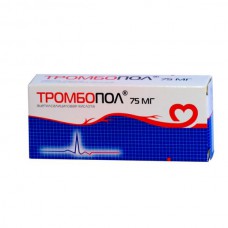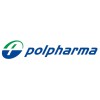Expiration date: 04/2026
The composition and form of issue:
Tablets, enteric coated tablets, 1 tablet contains active substance:
acetylsalicylic acid 75 or 150 mg
excipients: corn starch MKTS carboximetilkrahmal sodium
enteric coated sheath: polymer Acrylic eyes (mixture for coating tablets: methacrylic acid copolymer type C, talc, titanium dioxide, triethylcitrate, crimson dye (Ponceau 4R), silica colloidal anhydrous, sodium bicarbonate, sodium lauryl sulfate)
Tablets 75 mg: blister of PVC/aluminium foil of 10 or 25 PCs. in cardboard pack 2 blisters of 25. or 3 or 6 blisters of 10 pieces.
Tablets 150 mg: blister of PVC/aluminium foil for 10 PCs. in cardboard pack of 3, 5 or 6 blisters.
Description pharmaceutical form:
The tablets are biconvex, round in shape, covered with kishechnorastvorima liner pink.
Pharmacokinetics:
Absorption
Absorption of acetylsalicylic acid from tablets, enteric coated, begins 3-4 hours from the time of taking the drug, confirming that the shell effectively blocks the dissolution of the drug in the stomach.
Cmax in plasma observed after about 2-3 hours, and an average of 12, 7 µg/ml for 150 mg tablets and 6, 72 µg/ml for tablets 75 mg.
The presence of food in the digestive tract to slow the absorption of the drug.
AUC is 56, 42 µg·h/ml for tablets 75 mg and 108, 08 µg·h/ml — tablets 150 mg.
Distribution
Acetylsalicylic acid is rapidly and largely penetrates into most tissues and body fluids of the organism.
Vd is about 0, 15-0, 2 l/kg and is increased simultaneously with the increase of drug concentration in the blood serum. The degree of coupling of the drug with blood plasma proteins depends on the concentration in healthy individuals is reduced simultaneously with the reduction of this concentration.
In renal failure, pregnancy and newborns salicylates may displace bilirubin from the albumin and facilitate the development bilirubinemia encephalopathy.
Metabolism
Acetylsalicylic acid is partially metabolized during absorption. This process occurs under influence of enzymes, mainly in the liver with the formation of metabolites such as phenyl salicylate, salicylate glucuronide and salitsilovaya acid, found in many tissues and urine.
In women the metabolism process is slower (less enzyme activity in the blood serum).
Excretion
T1/2 acetylsalicylic acid is from blood plasma is about 15-20 min.
Unlike other salicylates, with multiple drug digitalisierung acetylsalicylic acid does not accumulate in the serum.
Only 1% of an oral dose of acetylsalicylic acid excreted by the kidneys in the form of digitalisierung acetylsalicylic acid, the remainder is excreted in the form of salicylates and their metabolites.
In patients with normal renal function of 80-100% of a single dose of the drug is excreted by the kidneys within 24-72 hours
Description pharmacological action:
The mechanism of antiplatelet action of acetylsalicylic acid lies in the irreversible inhibition of COX-1, resulting in blocked synthesis of thromboxane A2 and inhibits the aggregation of platelets. Antiplatelet effect occurs even after application of low doses of the drug and lasts for 7 days after a single dose. These properties of acetylsalicylic acid are used in the prevention and treatment of myocardial infarction, ischemic heart disease, complications of varicose veins.
Acetylsalicylic acid also has anti-inflammatory, antipyretic and analgesic action.
Tablets are enteric coated Tromodol the envelope, whereby to dissolve and release the active substance in the more alkaline environment of the duodenum, reducing the irritant effect of acetylsalicylic acid on gastric mucosa.
Indications:
- prevention of acute myocardial infarction in the presence of risk factors (e.g. diabetes, hyperlipidemia, hypertension, obesity, Smoking, old age) and re-myocardial infarction
- unstable angina
- prevention of stroke (including patients with transient disorders of cerebral circulation)
- prevention of transient disorders of cerebral circulation
- prevention of thromboembolism after surgery and invasive procedures on vessels (for example coronary artery bypass grafting, endarterectomy of the carotid arteries, arteriovenous bypass grafting, angioplasty of carotid arteries)
- prevention of deep vein thrombosis and thromboembolism pulmonary artery and its branches, including prolonged immobilization as a result of extensive surgical intervention.
Contraindications:
- hypersensitivity to acetylsalicylic acid, auxiliary substances of the drug and other NSAIDs
- erosivno-azwenne shock syndrome (in the acute phase)
- gastrointestinal bleeding
- hemorrhagic diathesis
- bronchial asthma induced by ingestion of salicylates and NSAIDs the combination of bronchial asthma, recurrent polyposis of the nose and paranasal sinuses and intolerance of acetylsalicylic acid
- combined use with methotrexate at a dose of 15 mg per week or more
- pregnancy (I and III trimester) and lactation
- the age of 18.
Caution: gout, hyperuricemia, ulcers disease stomach and duodenal ulcers or gastrointestinal bleeding (in history), renal/hepatic failure, bronchial asthma, chronic respiratory diseases, hay fever, nasal polyposis, drug Allergy, concomitant use of methotrexate at a dose less than 15 mg/week, concomitant therapy with anticoagulants, pregnancy (II trimester).
Application of pregnancy and breast-feeding:
The use of salicylates in the first trimester of pregnancy leads to the development of the splitting of the upper palate, heart defects in the fetus in the third trimester causes inhibition of labor, premature closure of the ductus arteriosus in the fetus, increased bleeding in the mother and fetus, and the appointment immediately before childbirth can cause intracranial hemorrhages, especially in preterm infants — the use of salicylates in these trimesters of pregnancy is contraindicated.
In the second trimester of pregnancy salicylates can be assigned only subject to the rigorous evaluation of risks and benefits.
Salicylates and their metabolites in small amounts of infiltrating breast milk. Casual reception salicylates during lactation is not accompanied by the development of adverse reactions in children and do not require discontinuation of breastfeeding. However, prolonged use of the drug or appoint him to a high dose breast-feeding should be discontinued immediately.
Side effects:
Gastrointestinal: nausea, heartburn, vomiting, pain in the abdomen, diarrhea, ulcers of the mucous membrane of the stomach and duodenal ulcer, including perforated, gastrointestinal bleeding, increased liver enzymes.
The respiratory system: bronchospasm.
CNS: dizziness, noise in the ears.
From the side of hematopoiesis: increased bleeding, anemia (rare).
Allergic reactions: urticaria, angioedema.
Drug interactions:
With simultaneous use of acetylsalicylic acid increases the effect of the following drugs:
- methotrexate, by reducing renal clearance and ousting him from the blood
- heparin and indirect anticoagulants, due to dysfunction of platelets, and displacement of anticoagulants from the blood
- thrombolytic drugs and inhibitors of platelet aggregation (tiklopidin)
- digoxin due to the decrease in its renal excretion
- gipoglikemicakih funds (insulin and sulfonylureas), due to the hypoglycemic properties of acetylsalicylic acid in high doses and displacement derived sulfonylureas from the protein due to
- valproic acid due to displacement of its Association with proteins
- NSAIDs
- sulfanilamidov (including co-trimoxazole)
- barbiturates
- lithium compounds.
An additive effect is observed while admission of acetylsalicylic acid with alcohol.
Acetylsalicylic acid weakens the effect of:
- protivopodagricakih drugs that increase elimination of uric acid (probenecid, sulfinpirazon, benzbromarone), due to the competitive tubular elimination of uric acid
- antihypertensive drugs, including ACE inhibitors
- aldosterone antagonists (e.g. spironolactone)
- loop diuretics (e.g. furosemide).
- Enhancing the elimination of salicylates, systemic corticosteroids are weakening their action.
Method of application and dose:
Inside.
Tablets should be taken regardless of the meal, not liquid, squeezed small amounts of water.
The drug is intended for prolonged use. The duration of therapy is determined by your doctor.
Prophylaxis for suspected acute myocardial infarction: 75 or 150 mg per day.
Prevention of newly emerging acute myocardial infarction in the presence of risk factors: 75 or 150 mg per day.
Prevention of re-myocardial infarction, unstable angina, prevention of stroke and transient disorders of cerebral circulation, prevention of thromboembolic complications after surgical operations or invasive studies: 75 or 150 mg per day.
Prevention of deep vein thrombosis and thromboembolism pulmonary artery and its branches: 75 or 150 mg per day.
Overdose:
Symptoms: nausea, vomiting, tinnitus, and rapid breathing (symptoms).
There may also be symptoms such as hearing loss, visual disturbances, headaches, motor excitation, drowsiness, seizures, hyperthermia. In severe intoxication may develop disturbance of acid-base and water-electrolyte balance (metabolic acidosis and dehydration).
The symptoms of mild and moderate intoxication developed after the application of acetylsalicylic acid at a dose of 150-300 mg/kg. Symptoms of severe overdose develop at the dose of 300-500 mg/kg. the lethal dose of acetylsalicylic acid is more than 500 mg/kg.
Treatment: the specific antidote is absent.
In case of overdose acetylsalicylic acid should:
- induce vomiting and gastric lavage to reduce absorption of the drug. Such actions give the effect within 3-4 hours after taking the drug, and in the case of receiving a very large dose — up to 10 hours
- to reduce the absorption of acetylsalicylic acid it is necessary to take activated charcoal in aqueous suspension (adult dose — 50-100 g, for children — 30-60 g)
- it is necessary to carefully observe the violation of water-electrolyte balance and make up for it
- to speed up the excretion of acetylsalicylic acid through the kidneys and in the treatment of acidosis should/in introducing sodium bicarbonate required to maintain pH in the range 7-7, 5
- in very severe intoxication it is necessary to conduct hemodialysis or peritoneal dialysis
- in connection with possibility of development of respiratory acidosis, it is prohibited to take drugs, depressing Central nervous system, such as barbiturates
- patients with respiratory failure is necessary to ensure airway patency and oxygen, if necessary, to comply with intratracheal intubation and provide mechanical ventilation.
Precautions:
Acetylsalicylic acid can induce bronchospasm, as well as cause asthma attacks and other hypersensitivity reactions. Risk factors are the availability of bronchial asthma in history, hay fever, nasal polyposis, chronic respiratory diseases, and allergic reactions to other drugs (eg skin reactions, pruritus, urticaria).
Aspirin can cause bleeding of varying severity during and after surgery. The drug should be discontinued 5-7 days prior to surgery.
The combination of acetylsalicylic acid, anticoagulants, thrombolytic drugs and inhibitors of platelet aggregation accompanied by an increased risk of bleeding.
Acetylsalicylic acid in low doses can trigger the development of gout in predisposed individuals (with reduced excretion of uric acid).
The combination of acetylsalicylic acid with methotrexate is accompanied by increased incidence of side effects from the blood.
High doses of acetylsalicylic acid have hypoglycemic effect, which is necessary to keep in mind when assigning its patients with diabetes mellitus receiving hypoglycemic drugs.
In combined administration of corticosteroids and salicylates should be remembered that during treatment, the levels of salicylates in the blood is reduced, and after the abolition of the SCS is possible overdose of salicylates.
Not recommended combination of acetylsalicylic acid with ibuprofen, because it reduces the effectiveness of the drug Tramodol and therefore may reduce the life expectancy.
Excess doses of acetylsalicylic acid carries a risk of gastrointestinal bleeding.
The combination of acetylsalicylic acid with ethanol increased risk of damage to the mucosa of the gastrointestinal tract and lengthening the bleeding time.
Overdose is especially dangerous in the elderly. Patients older than 65 years due to the reduced efficiency of the kidneys and more frequent occurrence of adverse reactions from the gastrointestinal tract should take aspirin at lower doses.
Effects on ability to drive or to perform work requiring high speed physical and mental reactions. Data about the negative impact on the ability to drive a car or operate machinery no.


